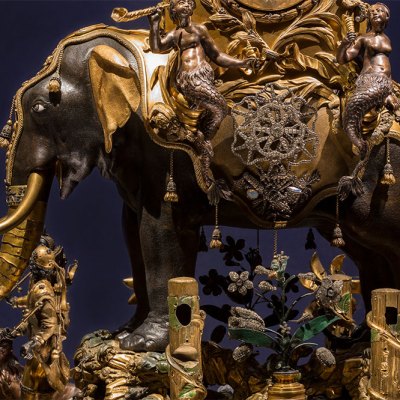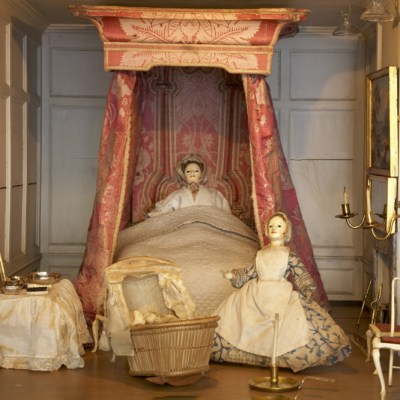
 ‘Four things to see’ is sponsored by Bloomberg Connects, the free arts and culture app. Bloomberg Connects lets you access museums, galleries and cultural spaces around the world on demand. Download the app here to access digital guides and explore a variety of content.
‘Four things to see’ is sponsored by Bloomberg Connects, the free arts and culture app. Bloomberg Connects lets you access museums, galleries and cultural spaces around the world on demand. Download the app here to access digital guides and explore a variety of content.
Each week we bring you four of the most interesting objects from the world’s museums, galleries and art institutions, hand-picked to mark significant moments in the calendar.
In 1974, Hungarian architect Erno Rubik was searching for a tool to encourage his students to think about geometry, movement and the transformation of an object in space and time. His solution became the Rubik’s Cube, a toy seemingly designed to delight and frustrate in equal measure.
Today, in celebration of the 50th anniversary of the invention of the Rubik’s Cube, we turn our attention to the whimsical world of toys and games. From the simple playthings of childhood to intricate mind-boggling puzzles, toys serve both as entertainment and as tools for exploration and learning. This week, we invite you to rediscover play through four objects that offer perspectives on the role of toys and games in shaping our imaginations and creativity.
‘Snappity’ the Kingston Crocodile (1919), Sopwith Aviation Company. Photo: © Kingston Heritage Service
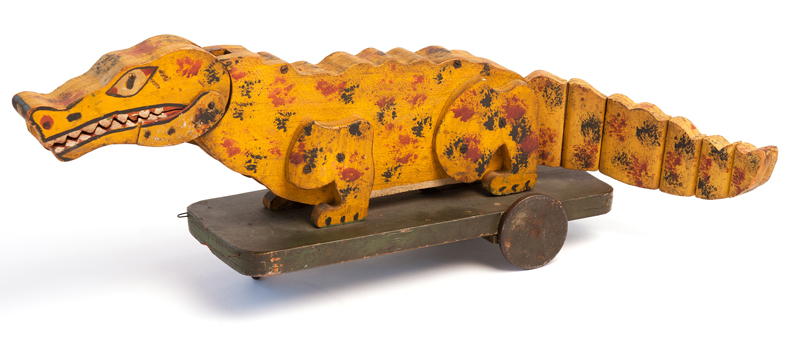
‘Snappity’ the Kingston Crocodile (1919), Sopwith Aviation Company
Kingston Museum, London
When the Sopwith Aviation Company in Kingston upon Thames felt the need to diversify after the end of the First World War, its solution was toys. The factory had employed over a thousand women during the war, and many of them turned their skills to making these crocodile toys. The edition of the toy in the Kingston Museum’s collection is now fondly referred to as ‘Snappity’ thanks to the suggestion of a young museum visitor. When pulled along, the wooden crocodile would snap its jaw and flick its tail from side to side. Snappity now serves as an informal mascot at the museum. Find out more on the Bloomberg Connects app by clicking here on your mobile device, or by scanning the QR code at the bottom of this page.
A set of dominoes (c. 1800). Young V&A, London. Photo: © Victoria and Albert Museum, London
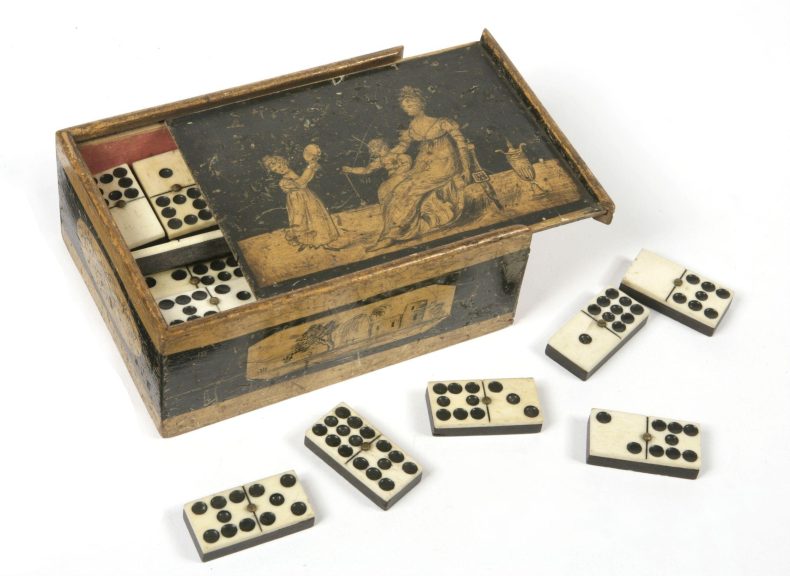
Boxed set of dominoes (c. 1800), England
Young V&A, London
Dominoes were a Chinese invention that stretch back to the 10th century at least, though the versions played in China resembled Western card games. Western-style dominoes emerged in continental Europe in the mid 18th century. The set pictured above was crafted around 1800 in England. The intricate lacquered wooden box is decorated with scenes that include a woman and children playing. Unusually, the tiles in this set go up to nine rather than the standard six. Click here to learn more.
The paper board game Nieuw Circus Spel (1887–91), published by S. Warendorf (II) and printed by Jos Vas Dias & Co. Rijksmuseum, Amsterdam
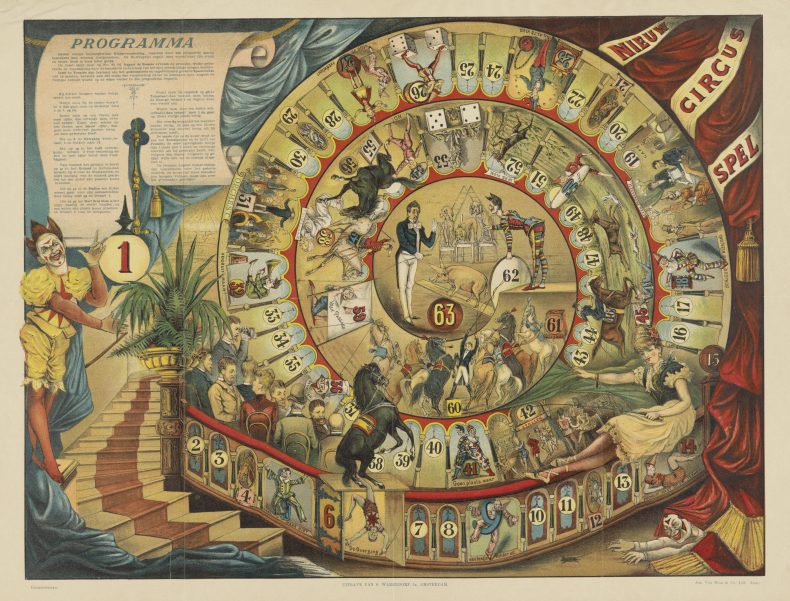
Nieuw Circus Spel (1887–91), published by S. Warendorf (II)
Rijksmuseum, Amsterdam
One of a collection of paper board games at Amsterdam’s Rijksmuseum, this late 19th-century edition bears the title of ‘Nieuw Circus Spel’ (New Circus Game). This one offers a unique twist on the traditional ‘Game of the Goose’ race game, which originated in 15th-century Italy: as in that game, the object is to start on the outermost space and progress inwards through the spiral by rolling dice, landing on favourable spaces and avoiding hazards. In this iteration, the special spaces are marked by not geese but clowns. Find out more by clicking here.
A wooden weet weet from the Darling River region of New South Wales. Photo: Rebecca Fisher; © Australian Museum, Sydney
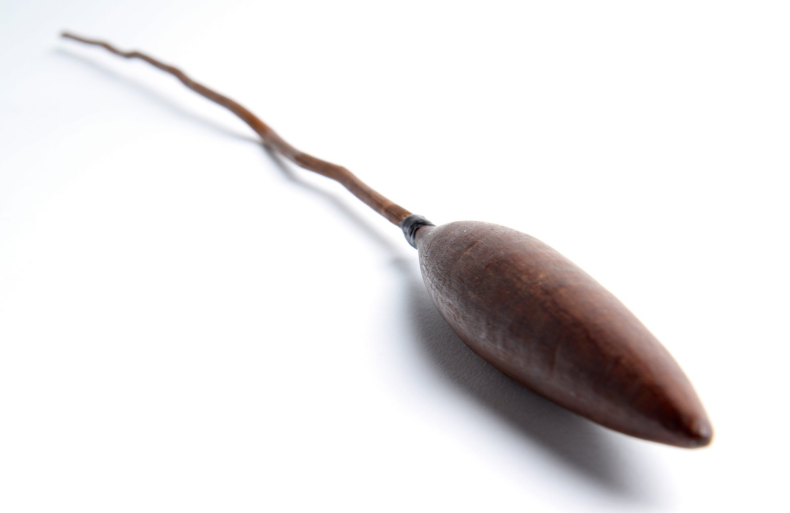
Weet weet
Australian Museum, Sydney
Weet weets are Aboriginal toys designed to be thrown long distances for competitions or in bird hunting, as well as in games for younger boys. When it eventually lands, the weet weet bounces and hops along the ground in such a manner that it earned the nickname ‘kangaroo rat’. It may seem a simple design, but is deceptively difficult to create a good one. This example was crafted from a single piece of wood and originates from the Darling River region of New South Wales. Click here to find out more.
![]() ‘Four things to see’ is sponsored by Bloomberg Connects, the free arts and culture app. Bloomberg Connects lets you access museums, galleries and cultural spaces around the world on demand. Download the app here to access digital guides and explore a variety of content or scan the QR code.
‘Four things to see’ is sponsored by Bloomberg Connects, the free arts and culture app. Bloomberg Connects lets you access museums, galleries and cultural spaces around the world on demand. Download the app here to access digital guides and explore a variety of content or scan the QR code.

